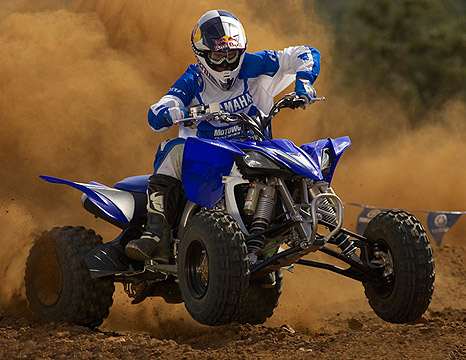Ask the Editors: Is My Center Of Gravity Better Than Yours?
Dear ATVC:
My buddy says his Yamaha YFZ450R is superior on the track because Yamaha’s engineers pay close attention to center of gravity when designing their quads. Is there any truth to this?

Yes and no- Yes Yamaha is known for extensive testing to ensure proper mass centralization as it applies to the handling of their machines but by no means are they alone when it comes to such concerns. In fact there isn’t a performance ATV made today that hasn’t undergone countless hours of theoretical and real-world testing to ensure that the laws of physics working against everything on this planet don’t upset the quad’s handling.
In terms of center of gravity specifically, imagine if you will a point of balance on your ATV; a feasible way to implement this theoretical idea in action would be to grab a yard stick or a ruler and move it along an extended finger. The stick’s center of gravity is the place where you could balance it on just one finger.

ATV engineers do their best to position the engine, wheels and suspension in precisely the right location to keep the machine’s mass from unwanted rotation around this balance point. When they succeed handling is neutral- meaning the rider is in control of the ATV’s speed, trajectory and position (opposed to the machine fighting the rider’s input).
Believe it or not, because an engine contains moving (reciprocating) parts, a new set of physics comes into play as well. Engineers combat the forces the engine introduces to the equation by moving as much reciprocating mass as possible toward the center of gravity, where the back and forth motion of the piston and crank is minimal in terms of overall handling.

